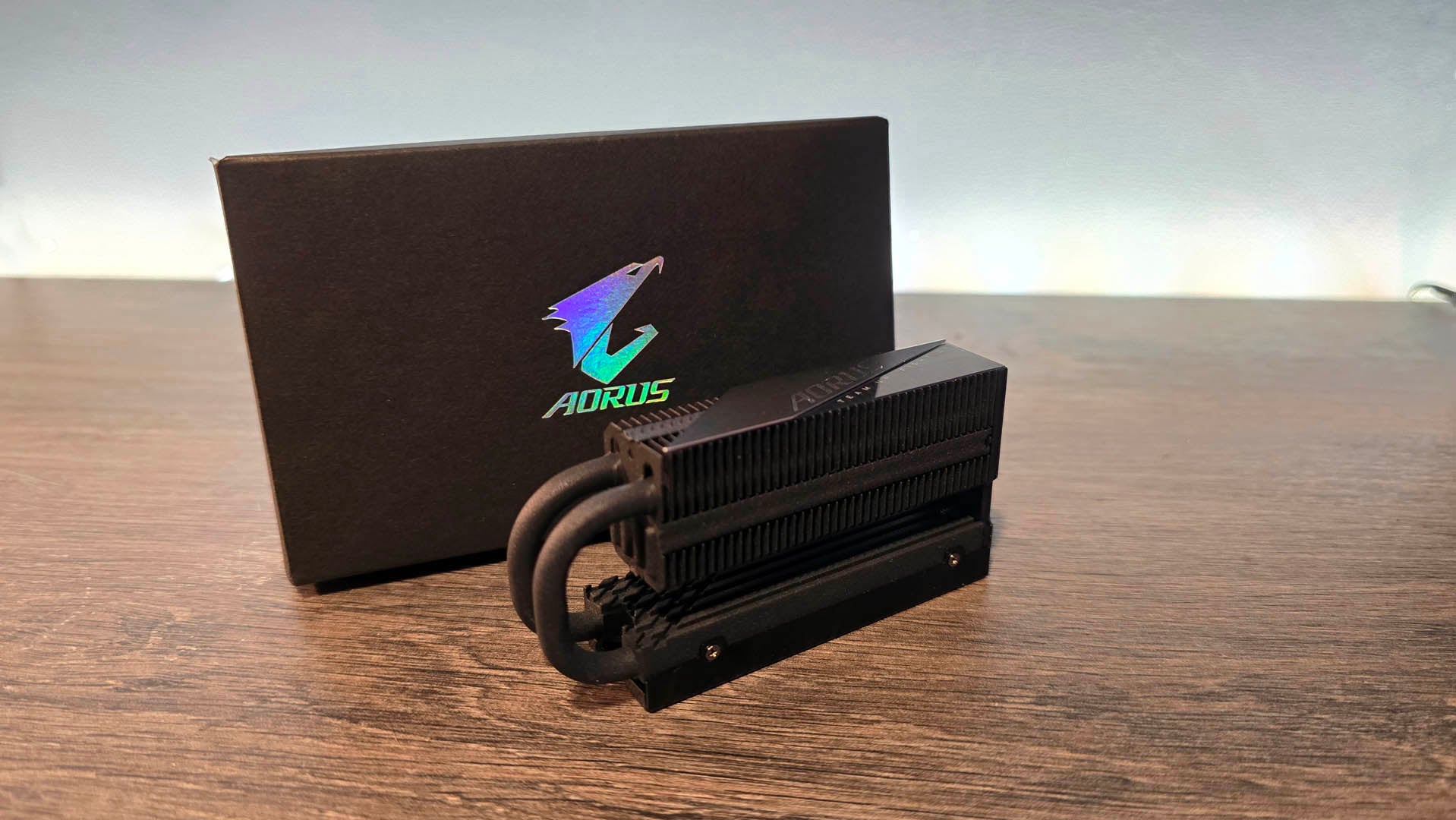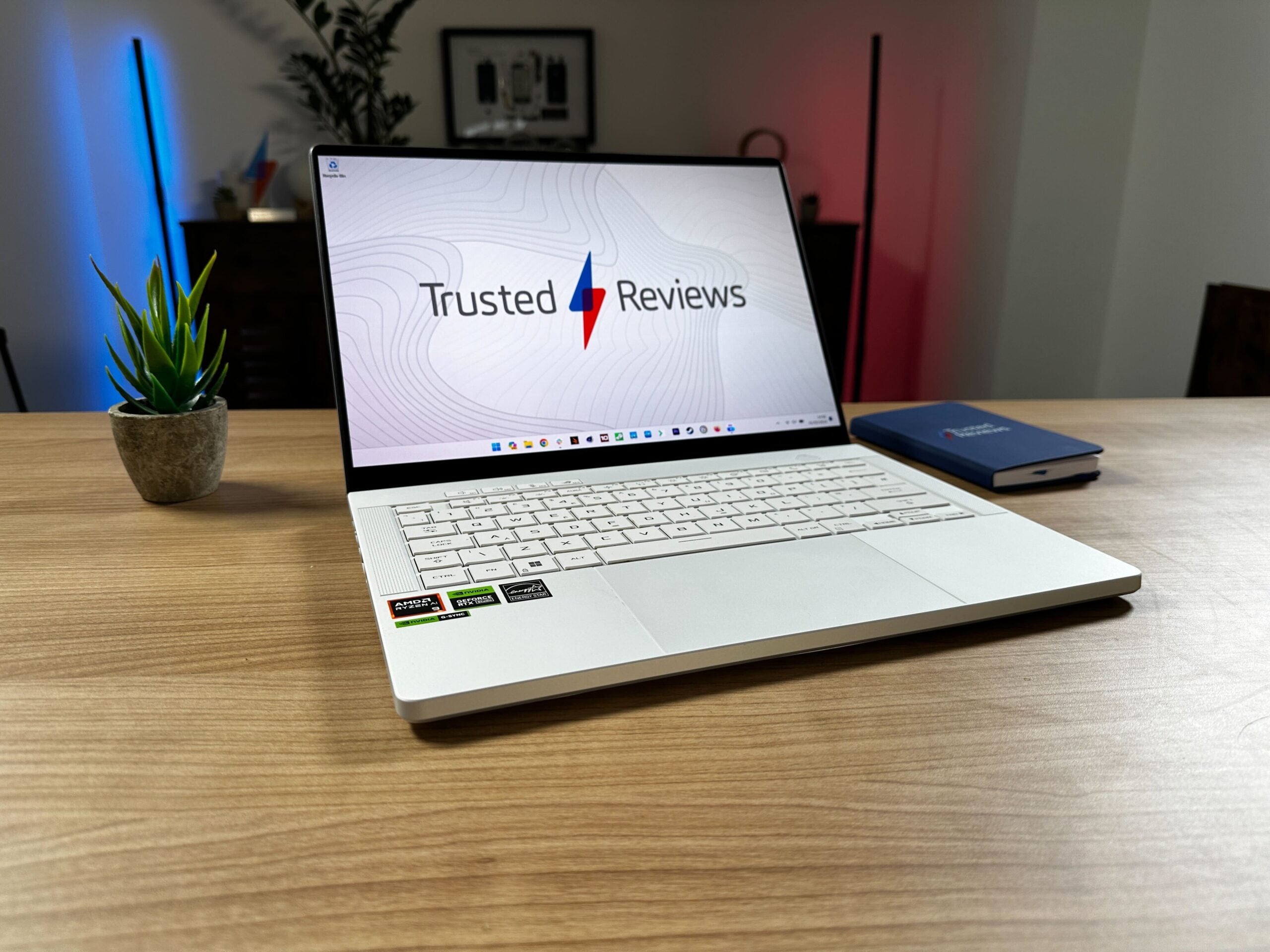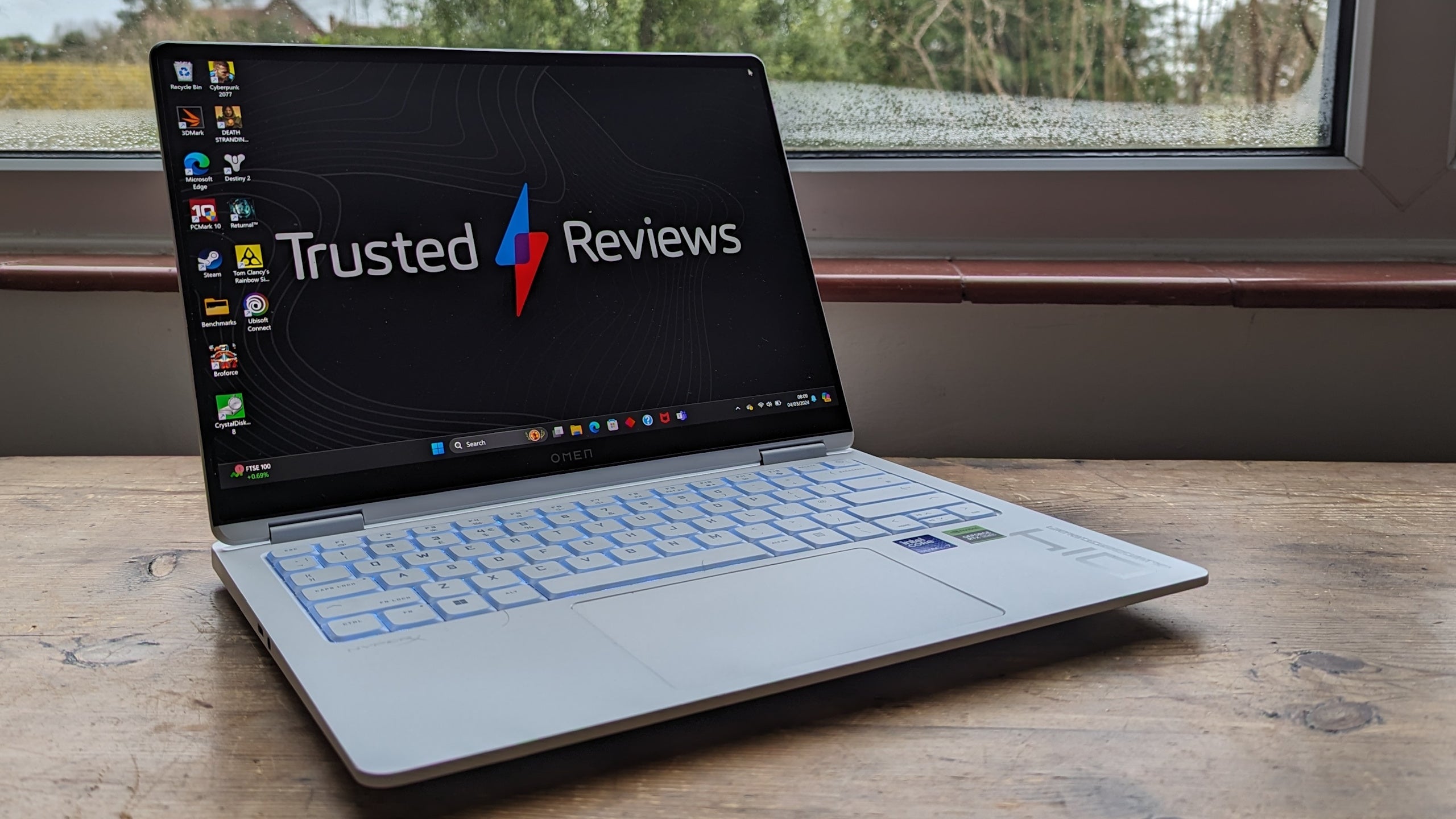Apple MacBook Pro 16-inch M3 Max Review
A fantastic machine for those who need supreme power on the go





Verdict
The Apple MacBook Pro 16-inch M3 Max may not be a big improvement on its predecessor but its a machine that’ll comfortable improve many demanding workflows for the right user. The screen is absolutely stunning and the keyboard is top-drawer, while the selection of ports is impressively varied.
Pros
- Exceptional performance
- Stunning display and keyboard
Cons
- The price builds up very quickly
- No Face ID
Key Features
- 16-inch displayWe tested the 16-inch model, but there’s a 14-inch version too.
- M3 Max chipsetThis is powered by Apple’s most powerful M3 chip and the performance is exceptional.
- New colourSpace Black replaces the darker grey option and looks great
Introduction
As we enter 2024, the MacBook Pro 16-inch M3 Max remains the most powerful Apple laptop you can buy. It’s also its largest and most expensive. This edition of the MacBook Pro is mightility impressive, demonstrating just how much the M-series chips are capable of once again.
The 16-inch model comes with a starting price of £3599/$3499, but that can then quickly rise towards a price of £6000/$6000 and beyond. However, those prices will be warranted for creative professionals with serious demands, this is a laptop made for productivity or, even, your entry to mid-level creative user. It’s a serious bit of kit.
The specifications suggest the dominant power that is to come, with up to a 16-core CPU, 40-core GPU, 128GB unified memory and 8TB SSD storage. There’s also a fantastic HDR-capable display, good port selection and Apple’s best-in-class keyboard and trackpad. The MacBook Pro 16-inch M3 Max is well set up to be one of the best laptops for creative professionals on the market.
Design and Keyboard
- Space Black is the standout hue
- Adequate port selection
- Lovely overall look
Apple firmly sticks by the ‘if it ain’t broke, don’t fix it’ mantra when it comes to design reinvention with its products. Yearly redesigns are a thing of the past and huge changes for the MacBook line are sparse.
The Apple MacBook Pro 16-inch M3 Max keeps the same overall design that’s been around since 2021, with the only notable difference being a slightly darker Space Black option replacing the older Space Grey hue.
This dark matte colour is far better than the Midnight MacBook Air M2 at resisting fingerprints and it doesn’t require constant cleaning to keep it looking nice. However, those expecting a proper deep black will be disappointed. This isn’t the same black as the classic polycarbonate MacBook from 2006, instead, it edges more on the dark grey, especially under brighter lights.
There’s a silver alternative too, and those looking at the entry-level MacBook Pro with M3 miss out on the Space Black completely.
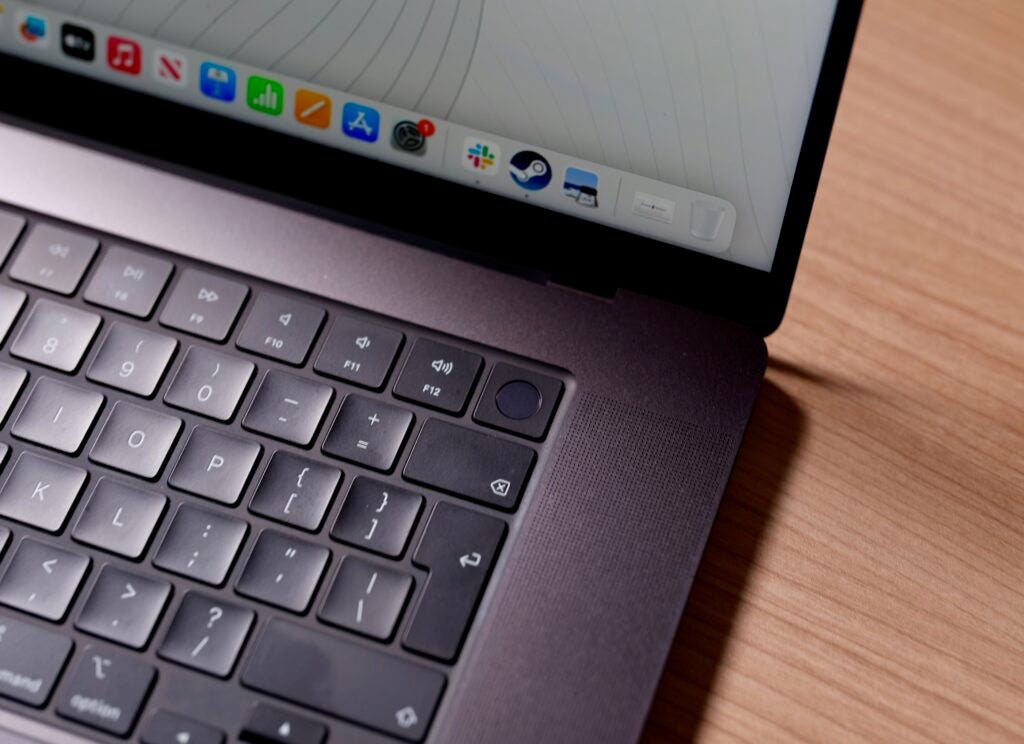
Along with the colour choices, there are two screen sizes to choose from. I’ve got the 16-inch model here, which is a large machine that focuses more on performance, battery life and a good selection of ports rather than being the most portable machine around. There’s a 14-inch alternative, which I prefer due to its great combination of portability and performance.
The design is boxy, with rounded corners and lots of flat edges. Considering the performance that can be extracted, the max 2.16kg (16-inch, M3 Max) weight is absolutely fine by me and it remains a portable machine.
Around the sides of the machine, there’s a good, if not unbeatable, selection of ports. Apple has refused calls to bring back USB-A ports, but you do get a very welcome SDXC card slot, a MagSafe port for charging, an HDMI port, a 3.5mm headphone jack and three Thunderbolt 4 (USB-C) ports. These three ports all support charging, DisplayPort, USB 4 (up to 40Gb/s) and Thunderbolt 4 (up to 40Gb/s).
I appreciate how Apple doesn’t limit these ports, keeping them all the same so you’re not faffing to find the right one for charging or display output. It’s also nice ports are on both sides, unlike on the MacBook Air where everything needs to be plugged in on one side.
The keyboard is an absolute joy to type on thanks to well-sized keys and a full-sized function row. The trackpad is wonderfully responsive too and it’s absolutely massive on this 16-inch laptop.
Display and Sound
- 14 and 16-inch sizes (16-inch reviewed here)
- Notch remains but isn’t intrusive
- One of the best laptop screens around for HDR content
If you’ve read either of my reviews of the recent MacBook Pros since the big 2021 redesign, then this section won’t come as a surprise. The display, whether 14-inch or 16-inch, remains the same. This is far from an issue as the screen used here is fantastic in just about every way, yet it does leave me longing for the few issues I have to be ironed out.
My biggest issue remains the notch – the noticeable divet in the display that hides the front-facing 1080p webcam. The notch doesn’t get in the way as such as most apps are smart enough to work around and it doesn’t encroach into videos like it does on an iPhone, yet it feels like the space could have been used in a better way. The webcam is adequate, though far from standout, and it lacks any biometric features that would enable Face ID. This is a missed opportunity.
There’s also no touch support, a feature found on most of the best laptops running Windows.
These gripes aside, the screen is fantastic and it’s one of my favourite features of this laptop. If I were debating between a MacBook Air and a 14-inch M3 MacBook Pro, the higher-quality panel on the Pro model would convince me to pay the extra.
When compared to the Air, the Pro models swap the LCD for a far superior Mini LED panel and up the refresh rate from a standard 60Hz to an adaptive 120Hz. These two changes make a big difference.
The Mini LED is best described as a combination of the best bits of both LCD and OLED The panel allows for true HDR playback, vital if you’re creating HDR content and need to see how everything looks. It also allows for HDR playback of content, whether it’s videos shot on an iPhone or via a supported streaming service or YouTube. Apple says content can hit 1600 nits of brightness in certain HDR instances and I found it could easily hit 500-600 nits in general use.
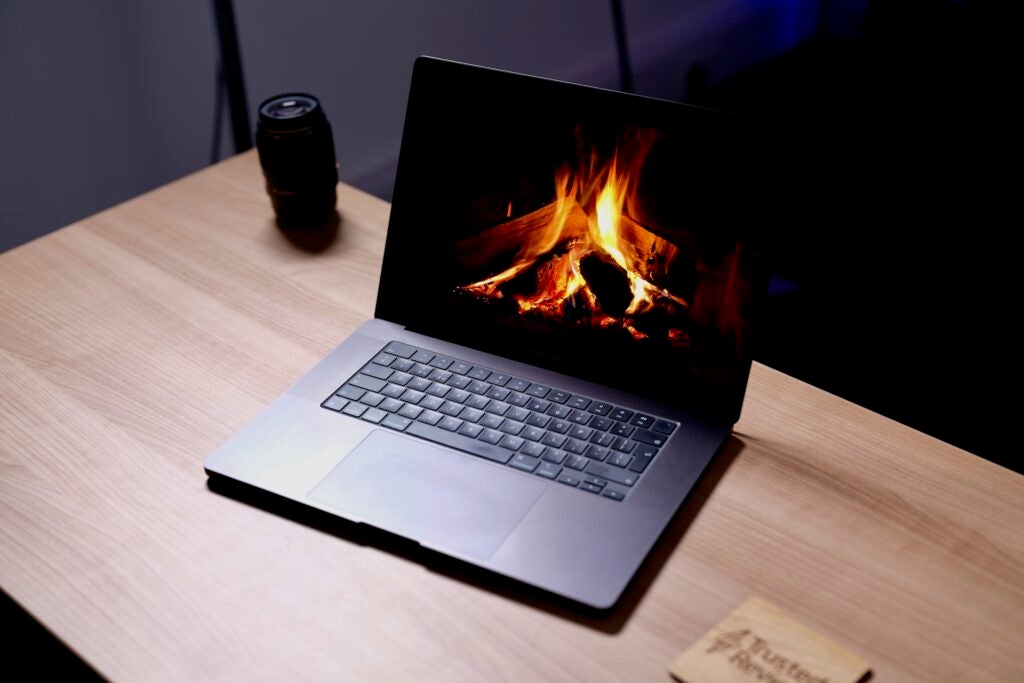
Blacks are deep and inky – especially noticeable when you’re watching a video with black bars on the top and bottom – while colours are rich and immersive and just about on par with OLED. On the 16-inch model, the expansive display is an absolute joy to work on and I often forget to plug it into an external monitor when I’m just writing.
If you do want to expand the display onto an external monitor, the M3 Max chip inside this machine can support up to four external displays (three at 6K and one at 4K) or three displays (two at 60K and one at 8K). It can also output 4K at 250Hz over HDMI.
The adaptive ProMotion refresh rate remains exclusive to the Pro MacBooks too and it’s even more welcome now the MacBook Pro is more skilled at gaming. It also just makes everything feel a little bit smoother.
Elsewhere, the speakers pump out fantastic audio and the microphones capture crisp voices for virtual meetings. The icing on the cake really would be a SIM slot, or eSIM support, to allow true mobile work with a 5G connection.
Performance
- Stunningly fast, especially up against M1 and Windows rivals
- Stays quiet even during intensive tasking
- Gaming is its toughest challenge but it impresses
There are numerous options for the latest MacBook Pro and I will delve into other versions, including the base 14-inch MacBook Pro, in future reviews. This review was conducted with a MacBook Pro M3 Max variant with the following specs:
- 16-core CPU
- 40-core GPU
- 48GB memory (this can be pushed up to 128GB – for a high price)
- 1TB SSD
The Apple MacBook Pro 16-inch M3 Max is now the most powerful laptop that Apple offers, but exactly how much more powerful is it than the previous iteration? The M3 series was expected to represent a bigger leap forward for Apple Silicon chips than the iterative shift between M1 and M2. The reality is somewhere in between iteration and innovation.
Unfortunately, we were only able to test an M2 Pro model with the previous version of the MacBook Pro so aren’t able to make direct comparisons in our benchmarking. However, we did test an M2 Ultra-powered Mac Studio and it makes for interesting reading up against the M3 Max
Before I dive into the results, it’s worth making something clear with the MacBook Pro (M3 Max), this is not a productivity laptop – no matter how many tabs you like to have open – and it even provides far more horsepower than most creatives will require. It is only those who work with complex workloads and applications should consider forking out the high sum this laptop requires – think advanced 3D modelling or intensive video and music production.
The benchmarking I carried out of the MacBook Pro (M3 Max) gives its most notable results when compared with previous Apple devices. It, impressively, beats Apple’s most powerful chip from the previous generation, the M2 Ultra, across our single-core tests. The same isn’t true for multi-core where it’s more of a mixed bag, the M3 Max keeps pace with M2 Ultra in a multi-core Geekbench 6 computational test but, when it comes to the Cinebench rendering and PugetBench for Premiere Pro creative benchmarking, it remains behind.
It’s this mixed bag that perhaps explains why Apple was focused on comparisons with Intel and M1 MacBooks during its launch event. Up against the Mac Studio (M1 Max), the new MacBook Pro crushes it with results across all our testing coming in at between 50-100% better than the older desktop.
This isn’t all about Mac on Mac though, you may be considering a switch to or from a Windows laptop too. However, when it comes to computational and creative performance, the M3 Max has the rest of the field beat. Its closest rival in our testing was the AMD Ryzen 9 7845HX-wielding Alienware M16, which was able to stay within touching distance in single-core computational testing while falling well short in multi-core. But, in the multi-core Cinebench rendering test, it did manage to top the MacBook Pro M3 Max.
When the MacBook Pro (M3 Max) is put up against creator-focused Windows laptops, there’s also little to put Apple on edge. When taking on the latest Microsoft Surface Laptop Studio 2, Lenovo Yoga Pro 9i 16 and Samsung Galaxy Book 3 Ultra, it showed results that were 20-60% higher. It’s also worth noting, as with all the M-series chips, the MacBook can perform similarly when not plugged in while rival laptops see significantly reduced performance.
And, what about gaming, where Apple was keen to tout its improvements this year? MacOS remains limited in the games it offers but Shadow of the Tomb Raider remains a stalwart.

I put the M3 Max up against the Lenovo Yoga Pro 9i and its combination of the Intel Core i7-13700H and Nvidia GeForce RTX 4070 GPU. The results made for a great indicator of what Apple can now achieve in gaming as it was a close-run thing, with the Lenovo achieving 91fps in QHD and 135fps in FHD. By comparison, the MacBook Pro hits 81fps and 117fps respectively. Interestingly, games do still feel like the area in which Apple’s chips have to work the hardest, with the Shadow of the Tomb Raider benchmark creating far more heat and noise from the MacBook Pro than any other tests I can – within which the MacBook Pro often remained whisper silent.
Apple’s SSD speeds are a tad skew-whiff compared to what you’ll find on a Windows laptop but it’s no bad thing. You’ll find 5,077.9MB/s read and 6,375.2MB/s write speeds here, while traditionally it’ll be the read speed that runs faster.
However, the speeds are strong nonetheless, greatly surpassing the likes of the MacBook Air M2 but falling short of the read speeds of high-end Windows rivals and not representing much of a change from M2. Either way, the speeds are such that performance will be suitably catered for and file transfer will be a breeze.
Battery Life
- Exceptional endurance
- Same performance whether plugged in or not
- Colour-matched braided MagSafe cable included
The Apple MacBook Pro 16-inch M3 Max isn’t just a powerful machine, but one that can last for an impressively long time on a single charge. If you’re coming from a previous M-series machine this will come as little surprise; those moving from an older Intel machine (even older 15-inch versions) will notice a serious upgrade.
Of course, how you use the machine will ultimately determine how long it lasts and more intensive tasks drain it much quicker.
While Apple claims you can expect 22 hours of playback from a movie downloaded from the Apple TV app, I got closer to 24 hours. Apple also claims you’ll get 15 hours of web browsing, which I managed to comfortably achieve. As someone who works predominantly in a browser, a long 9.30 am to 7:30 pm day left me with 25% battery left. Compared to the M1 Pro MacBook Pro 16-inch I reviewed in 2021, this is a couple of hours of extra juice from a single charge.
There are two ways to charge the MacBook Pro. In the box, there’s a 140W plug and a USB-C to MagSafe cable that clicks in magnetically. I love MagSafe as it adds an extra layer of protection against accidentally tripping over the charging cable and seeing your laptop go flying. Apple has also colour-matched the MagSafe cable (this Midnight version came with the same colour cable, for instance), yet the charging block remains white so it looks a bit odd. I think I would have just preferred a white cable.

Using the MagSafe is the quickest way of charging and the way I have tended to stick with it. In my tests, a 40-minute charge took me from 0-50%. Any of the other three Thunderbolt ports can be used to charge the laptop too, so if you’re in a pinch and there’s a charger from a previous MacBook Pro around it’ll still work fine.
Latest deals
Should you buy it?
You should buy if you need supreme power on the go
If you’ve got the money, and require the performance, the MacBook Pro 16-inch M3 Max is a laptop that will tick all the boxes.
You shouldn’t buy if gaming is a key priority
Apple is improving the gaming skills of both its software and hardware, but it still lags behind Windows competition.
Final Thoughts
The Apple MacBook Pro 16-inch M3 Max is a laptop that isn’t made for the mainstream. Despite its signature Apple looks, you should only consider picking this up if you have intensive graphical workloads. Think detailed enviroment and model creation, professional moviemaking and the like. It’s also made for those types who are on the go too, as devices like the Mac Studio would serve them well, but this device offers more portability – and, currently, the latest M3 series chip.
We’re yet to review the more reigned in M3 and M3 Pro models of the latest MacBook Pro, so do keep an eye out for those. But, for now, for most productivity users and even entry-level creatives, the MacBook Air M2 (available in both 13 and 15-inch sizes) remains an excellent option and is the cheapest way into the latest editions of MacBooks right now.
But, for those determined to consider this beastly machine, it impressives with performance often 60% better than similarly creative-focused laptops, fantastic battery life and a screen that continues to impress even with minimal upgrades, this is the best high-end laptop I have ever seen.
How we test
Every laptop we review goes through a series of uniform checks designed to gauge key things, including build quality, performance, screen quality and battery life.
These include formal synthetic benchmarks and scripted tests, plus a series of real-world checks, such as how well it runs popular apps.
We test the performance via both benchmark tests and real-world use.
We test the screen with a colorimeter and real-world use.
We test the battery with a benchmark test and real-world use.
We used as our main laptop for at least a week.
FAQs
Inside the box you get the MacBook Pro, a 2m USB-C to MagSafe 3 cable and a 140w USB-C power adapter.



